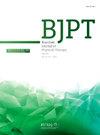Shoulder pain phenotyping: A guide for clinicians to determine predominant nociceptive, neuropathic, or nociplastic shoulder pain
IF 3.2
3区 医学
Q1 ORTHOPEDICS
引用次数: 0
Abstract
Background
Persistent shoulder pain is common, and it is associated with substantial morbidity and healthcare costs. Approximately 21 to 50 % of people with shoulder pain treated in primary healthcare recover within six months. It is not known why at least half do not recover. One possibility is the manner underlying mechanisms related to persistent shoulder pain are managed. Being able to determine the predominant pain phenotype in people with persistent shoulder pain (i.e., nociceptive, neuropathic, or nociplastic pain) together with their underlying mechanism and tailoring management accordingly may improve outcomes for people seeking care for persistent shoulder pain. The International Association for the Study of Pain (IASP) recently developed clinical criteria and a grading system for the identification of nociplastic pain.
Objective
In this paper, we aim to provide suggestions to clinicians to assist in the evaluation of pain phenotypes, underlying mechanisms, and their causal relationships.
Discussion
Based on the IASP clinical criteria and grading system for nociplastic pain, we outline pain phenotype evaluation and provide a clinical reasoning framework. To facilitate this, three case studies involving people living with persistent shoulder pain are presented.
肩痛表型:临床医生确定主要伤害性、神经性或伤害性肩痛的指南
背景:持续性肩痛是一种常见的疾病,它与大量的发病率和医疗费用相关。在初级保健机构接受治疗的肩关节疼痛患者中,约有21%至50%在6个月内康复。目前尚不清楚为什么至少有一半人没有康复。一种可能是与持续性肩痛相关的潜在机制的处理方式。能够确定持续性肩痛患者的主要疼痛表型(即伤害性、神经性或伤害性疼痛)及其潜在机制和相应的定制管理,可能会改善寻求持续性肩痛治疗的患者的结果。国际疼痛研究协会(IASP)最近制定了临床标准和鉴定伤害性疼痛的分级系统。目的在本文中,我们旨在为临床医生提供建议,以协助评估疼痛的表型,潜在机制及其因果关系。基于IASP对伤害性疼痛的临床标准和分级系统,我们概述了疼痛表型评估并提供了一个临床推理框架。为了促进这一点,三个案例研究涉及的人生活与持续性肩痛提出。
本文章由计算机程序翻译,如有差异,请以英文原文为准。
求助全文
约1分钟内获得全文
求助全文
来源期刊
CiteScore
6.10
自引率
8.80%
发文量
53
审稿时长
74 days
期刊介绍:
The Brazilian Journal of Physical Therapy (BJPT) is the official publication of the Brazilian Society of Physical Therapy Research and Graduate Studies (ABRAPG-Ft). It publishes original research articles on topics related to the areas of physical therapy and rehabilitation sciences, including clinical, basic or applied studies on the assessment, prevention, and treatment of movement disorders.

 求助内容:
求助内容: 应助结果提醒方式:
应助结果提醒方式:


